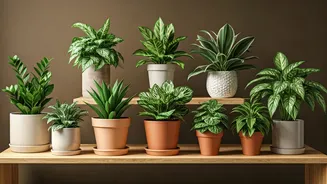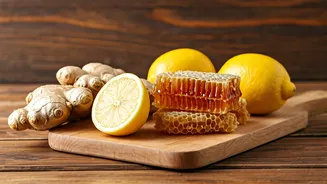Snake Plant (Sansevieria)
The Snake Plant, also known as Sansevieria, is a champion of low-light environments, making it ideal for beginners. Its ability to tolerate neglect is legendary;
it requires minimal watering and can thrive in various light conditions, including almost total darkness. Its upright, sword-like leaves add a modern touch to any room, and it's an excellent air purifier. Place it in a corner or a dimly lit area, and water it sparingly—only when the soil is completely dry. The Snake Plant’s resilience and low-maintenance needs make it a perfect addition for those new to indoor gardening or who have busy lifestyles. It's truly a statement piece with benefits.
Peace Lily (Spathiphyllum)
Elegant and relatively easy to care for, the Peace Lily (Spathiphyllum) is another excellent choice for low-light spaces. It is known for its beautiful, white, arum-like flowers. Peace Lilies prefer moderate watering, and their leaves will droop noticeably when they need a drink, serving as a helpful indicator. They appreciate humidity, so misting the leaves occasionally can keep them happy, especially in drier climates. While they flower best in moderate light, they will tolerate low light, making them a beautiful addition to shady corners. They are also efficient air purifiers, making them a healthy and attractive option for any home.
ZZ Plant (Zamioculcas zamiifolia)
The ZZ Plant, or Zamioculcas zamiifolia, is a standout for its almost indestructible nature and resilience in low-light conditions. Its glossy, dark green leaves add a touch of sophistication to any space. It can endure long periods without water, storing moisture in its rhizomes. The ZZ Plant is also relatively pest-resistant, making it a low-fuss option for indoor gardeners. It thrives in low light, making it suitable for offices or rooms with minimal sunlight. A good tip is to avoid overwatering; allow the soil to dry out completely between waterings to prevent root rot, which is its primary vulnerability.
Cast Iron Plant (Aspidistra elatior)
As its name suggests, the Cast Iron Plant (Aspidistra elatior) is incredibly tough and forgiving. It can handle low light, irregular watering, and various temperatures. Its broad, dark green leaves provide a lush appearance. Cast Iron Plants can tolerate virtually anything, making them ideal for beginners or those who travel frequently. They are slow growers, but their resilience more than makes up for that. This plant is well-suited to almost any indoor environment, from a dimly lit living room to a shady hallway, without requiring much attention.
Pothos (Epipremnum aureum)
Pothos, also known as Epipremnum aureum, is a popular choice for its versatility and ease of care. Available in various cultivars, it can tolerate low-light conditions and is relatively drought-tolerant. Pothos can be grown in hanging baskets, pots, or trained to climb. Its trailing vines and heart-shaped leaves add visual interest to any space. It is easily propagated through stem cuttings, allowing you to quickly expand your collection or share with friends. While Pothos adapts to low light, it's worth noting that its variegation might be less pronounced in such conditions.
Prayer Plant (Maranta leuconeura)
Prayer Plants (Maranta leuconeura) are prized for their unique foliage and their ability to 'pray', folding their leaves at night. These plants thrive in low-light settings, but they appreciate moderate humidity and regular watering. They are a bit more sensitive than some other plants on this list, requiring consistent moisture and avoiding direct sunlight, which can scorch their leaves. Their colorful leaves, with distinctive patterns, add a vibrant touch to any room. Prayer Plants can be a rewarding choice for those who enjoy observing the natural rhythms of their plants and are willing to provide consistent care.
Spider Plant (Chlorophytum comosum)
Spider Plants (Chlorophytum comosum) are known for their easy care and ability to produce 'spiderettes' or baby plants. They thrive in bright indirect light but can also tolerate low-light conditions, although their variegation might be less vibrant. They are effective air purifiers, making them a healthy addition to your indoor environment. Spider Plants are easy to propagate, and their spiderettes can be easily removed and potted to create new plants. They prefer well-draining soil and regular watering, allowing the soil to dry out between waterings. These plants adapt well to different environments, making them suitable for beginners.
Arrowhead Plant (Syngonium podophyllum)
Arrowhead Plants (Syngonium podophyllum) offer a unique aesthetic with their arrow-shaped leaves, which change shape as the plant matures. They tolerate low light and are relatively easy to care for, making them a good option for beginners. These plants come in a variety of colors and patterns, adding visual interest to any room. Arrowhead Plants prefer bright, indirect light, but they can adapt to lower light conditions. They like consistent moisture, but it's important to allow the soil to dry out slightly between waterings. Regular pruning helps maintain their shape and encourages bushier growth, making them a versatile choice for indoor gardens.











